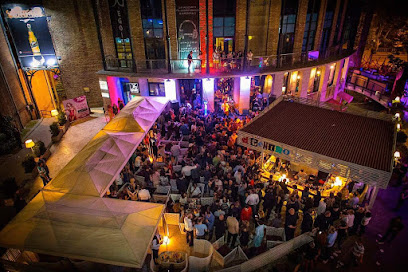
Baratashvili Bridge: A Statue-Strewn Pathway in Tbilisi
Discover the enchanting bronze statues of Baratashvili Bridge, a cultural gem in Tbilisi showcasing Georgia's rich heritage and stunning river views.
The Baratashvili Bridge in Tbilisi is home to stunning bronze statues that capture the spirit of Georgian culture and history. A must-visit for tourists, this picturesque location offers beautiful views of the river and the city skyline, making it a perfect spot for photography and relaxation.
A brief summary to Baratashvili Bridge Bronze Statues
- MRW5+M6W, Nikoloz Baratashvili Bridge, Tbilisi, Old Tbilisi, GE
Local tips
- Visit during sunrise or sunset for the best lighting for photographs.
- Take a leisurely walk to soak in the views of the river and nearby landmarks.
- Don't forget to explore the surrounding Old Tbilisi area for more cultural experiences.
- Bring a camera to capture the stunning sculptures and picturesque scenery.
- Try to visit on weekdays to avoid larger crowds during peak tourist seasons.
Getting There
-
Walking
If you are starting from the Tbilisi City Hall, head south on Rustaveli Avenue towards Freedom Square. Once you reach Freedom Square, take the exit towards Shota Rustaveli Avenue. Walk along this avenue until you reach the intersection with Ivan Franko Street. Turn left onto Ivan Franko Street and continue straight until you reach the Mtkvari River. You will see the Baratashvili Bridge ahead. Cross the bridge and the bronze statues will be located on the right side as you cross.
-
Walking
From the Narikala Fortress, start your descent towards the Old Town. Head towards the Shardeni Street and then take a right towards Kote Marjanishvili Street. Walk straight until you reach the Mtkvari River. Once you are at the riverbank, turn left and walk along the river until you reach the Baratashvili Bridge. The bronze statues are located on the bridge.
-
Public Transport
From the Tbilisi Metro Station at Rustaveli, take the metro to Avlabari Station. Exit the station and walk south towards the Mtkvari River. Continue straight until you reach the riverbank, then turn right. Follow the river until you see the Baratashvili Bridge. Cross the bridge, and you will find the bronze statues on your right.
Discover more about Baratashvili Bridge Bronze Statues
Iconic landmarks you can’t miss
Meezove-Janitor Sculpture
0.1 km
Explore the captivating Meezove-Janitor Sculpture in Old Tbilisi, a unique tribute to everyday heroes and a symbol of Georgia's artistic heritage.
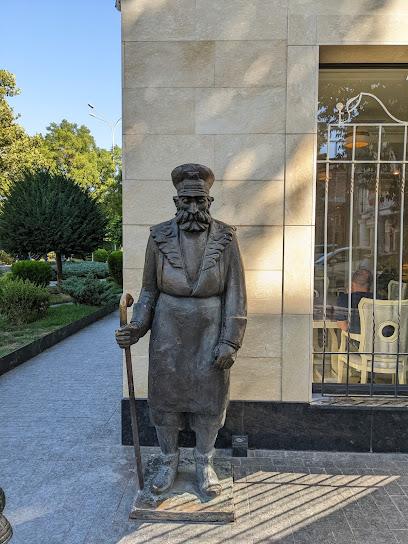
Gabriadze
0.2 km
Discover the enchanting Gabriadze Theater in Tbilisi, where captivating performances meet stunning architecture in the heart of Georgia's cultural scene.
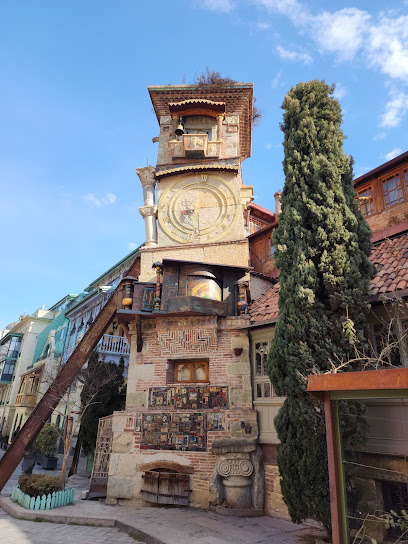
Nikoloz Baratashvili Memorial House-Museum
0.2 km
Explore the Nikoloz Baratashvili Memorial House-Museum, a homage to Georgia's literary genius nestled in Tbilisi's historic heart.
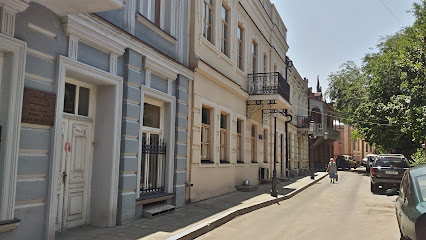
Georgian National Tourism Administration
0.2 km
Explore the essence of Georgia through the Georgian National Tourism Administration in Old Tbilisi, your gateway to unforgettable experiences.
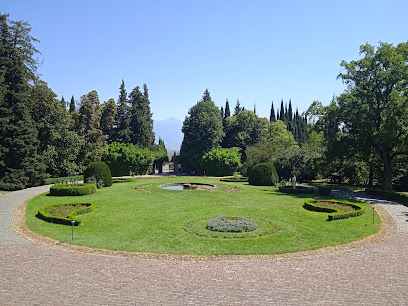
Kari church of St. George
0.3 km
Explore the stunning Kari Church of St. George in Tbilisi's Old Town, a serene Orthodox gem rich in history and architectural beauty.
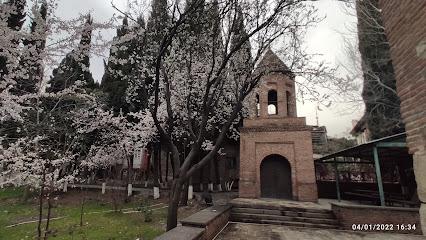
Lord Orbeliani Tower Fence
0.3 km
Explore the Lord Orbeliani Tower Fence in Tbilisi, a historical landmark showcasing exquisite Georgian architecture and cultural heritage.

George Chubinashvili National Research Center for Georgian Art History and Heritage Preservation
0.3 km
Discover the essence of Georgian culture at the George Chubinashvili National Research Center, where art history and heritage preservation come alive.
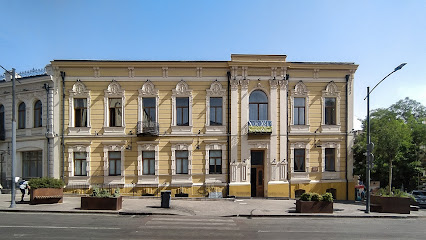
Shoti Restaurant
0.3 km
Discover the authentic taste of Georgian cuisine at Shoti Restaurant in Old Tbilisi, where every dish tells a story of tradition and flavor.

Native Language Monument
0.5 km
Explore the Native Language Monument in Tbilisi, a stunning tribute to linguistic diversity set in a beautiful park, perfect for art lovers and cultural enthusiasts.
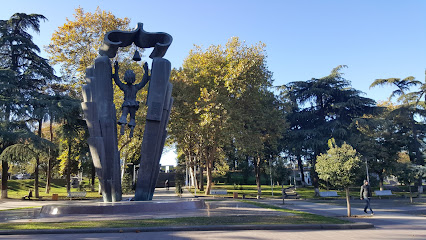
Mother of Georgia Tramway
0.6 km
Discover breathtaking views and rich history at the Mother of Georgia Tramway, a must-visit attraction in Tbilisi offering scenic rides and cultural insights.
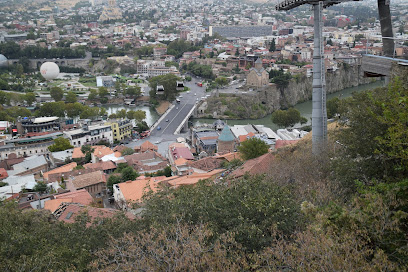
Tbilisi Tourist Information Center
0.6 km
Explore Tbilisi with confidence by visiting the Tourist Information Center, your essential resource for discovering Georgia's capital and its cultural treasures.
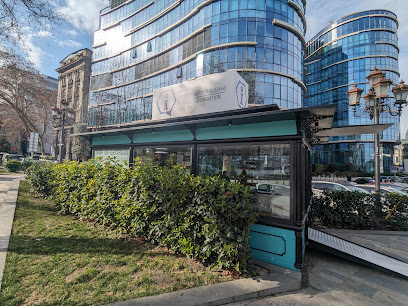
Zion Cathedral of the Dormition of Tbilisi
0.6 km
Discover the breathtaking Zion Cathedral of the Dormition in Old Tbilisi, a masterpiece of Eastern Orthodox architecture and a must-visit spiritual site.

Sion Cathedral of Tbilisi
0.6 km
Discover the Sion Cathedral in Tbilisi, a stunning Eastern Orthodox Church filled with rich history and breathtaking architecture, perfect for every traveler.
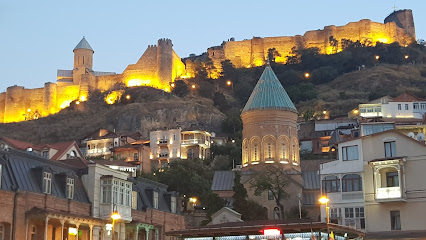
Museum of History of Georgian Jews
0.6 km
Discover the rich heritage of Georgian Jews at this insightful museum in Tbilisi, a journey through centuries of culture and resilience.
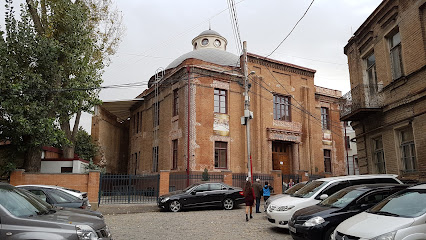
Special Illustration
0.6 km
Explore the captivating Special Illustration in Tbilisi, a historical landmark showcasing the artistic heritage of Georgia in an enchanting setting.
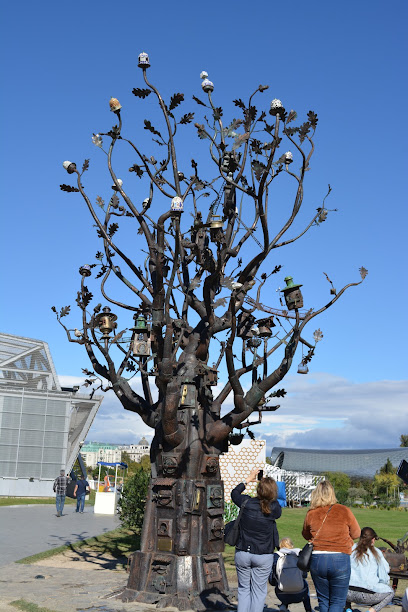
Unmissable attractions to see
Nikoloz Baratashvili Bridge
0.0 km
Discover the beauty of Tbilisi from the stunning Nikoloz Baratashvili Bridge, where history meets modern architecture along the Mtkvari River.
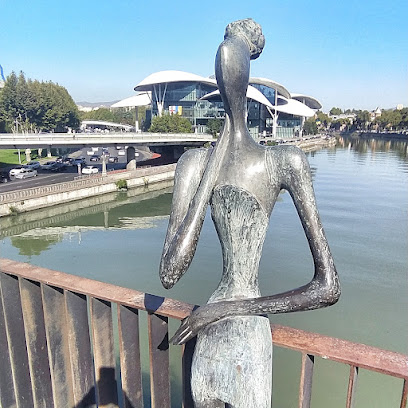
Tato Art Bridge
0.1 km
Explore the artistic wonders of Tato Art Bridge in Tbilisi, where creativity meets stunning views in an unforgettable cultural experience.
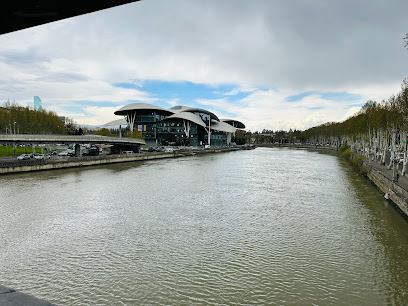
Berikaoba
0.1 km
A vibrant sculpture in Tbilisi's Old Town, celebrating Georgia's ancient spring traditions and cultural heritage through joyous dance.
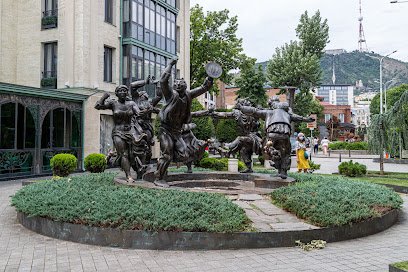
მონუმენტები/Monuments
0.1 km
Explore Tbilisi's Monuments: A Journey Through History and Culture in the Heart of Georgia's Capital.
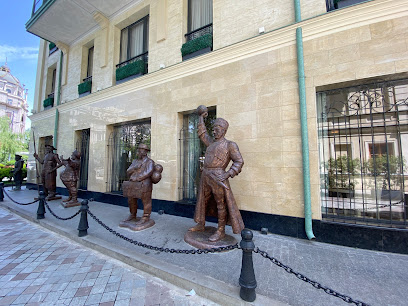
Street Art
0.1 km
Experience the energetic street art scene of Tbilisi at Baratashvili Bridge, where creativity meets culture in a stunning display of artistic expression.
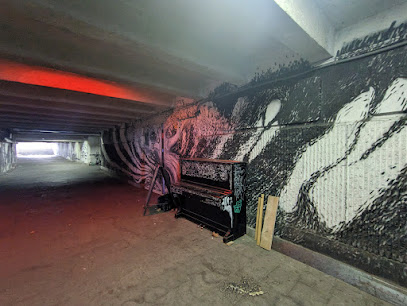
Jorjoliani and Kvantaliani Monument
0.1 km
Explore Tbilisi's rich heritage at the Jorjoliani and Kvantaliani Monument, a stunning historical landmark in Old Tbilisi celebrating Georgian culture.
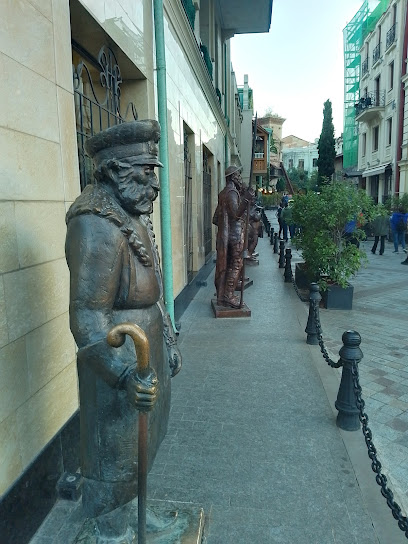
The lamp lighter
0.2 km
Discover the charm of Tbilisi through the iconic Lamp Lighter sculpture, a symbol of the city's rich artistic heritage in Old Tbilisi.
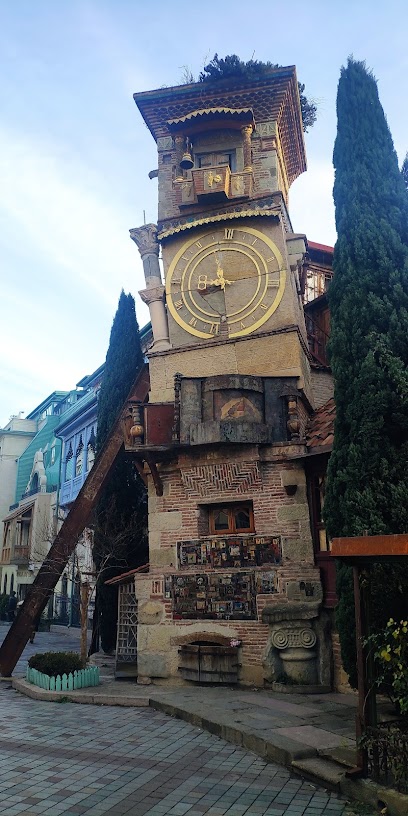
Gabriadze Theater
0.2 km
Experience the magic of storytelling at Gabriadze Theater, where innovative performances and enchanting puppetry bring Georgian culture to life.
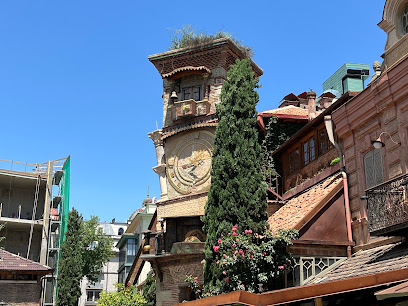
Nikoloz Baratashvili Statue
0.2 km
Experience the tranquil beauty of Nikoloz Baratashvili Statue Garden, a serene escape in Tbilisi, celebrating Georgian poetry and culture amid lush landscapes.
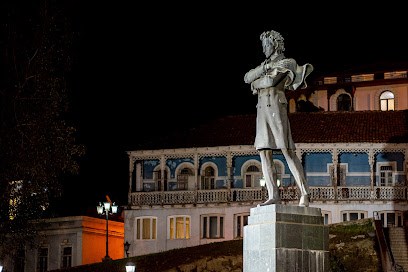
The Clock Tower
0.2 km
Discover the whimsical charm of Tbilisi's Clock Tower, a cultural landmark blending history, art, and delightful puppet performances.
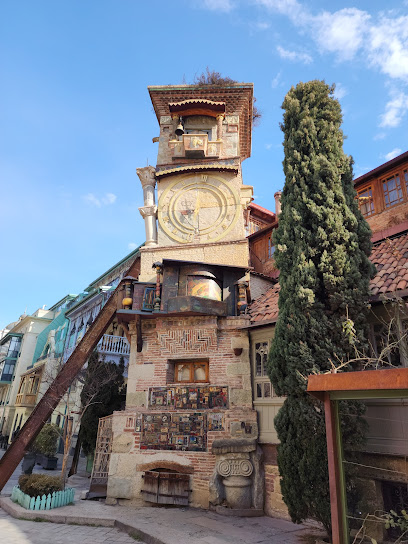
Anchiskhati Basilica
0.2 km
Explore Anchiskhati Basilica in Tbilisi: A 6th-century Orthodox church rich in history, art, and serene beauty amid the vibrant Old Tbilisi.
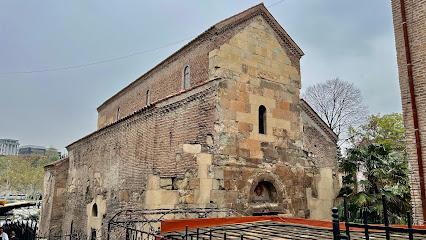
Vanki
0.2 km
Explore Vanki, an Armenian church in Tbilisi’s Old Town, blending stunning architecture with rich cultural history for an unforgettable visit.
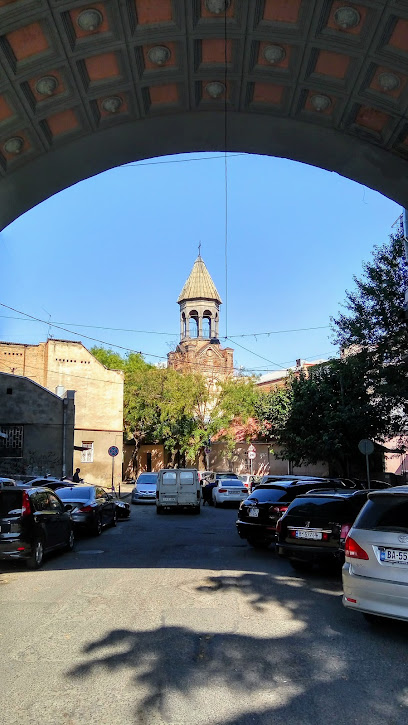
Patriarchate of Georgia
0.2 km
Explore the Patriarchate of Georgia, a stunning religious institution in Old Tbilisi that offers a glimpse into the country's rich spiritual culture.
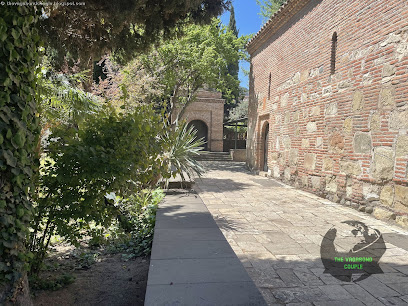
State Palace of Ceremonies
0.3 km
Explore the State Palace of Ceremonies in Tbilisi, a stunning blend of history and culture at the heart of Georgia's capital.
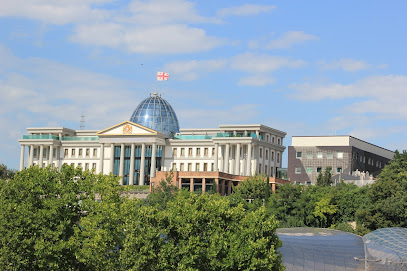
Ioane Petritsi Scuplture
0.3 km
Discover the stunning Ioane Petritsi Sculpture in Old Tbilisi, a tribute to Georgian culture and history amidst a vibrant urban setting.
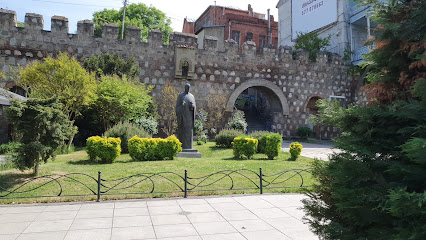
Essential places to dine
I love Georgia
0.1 km
Discover authentic Georgian cuisine at 'I Love Georgia', where tradition meets taste in the heart of Tbilisi's Old Town.
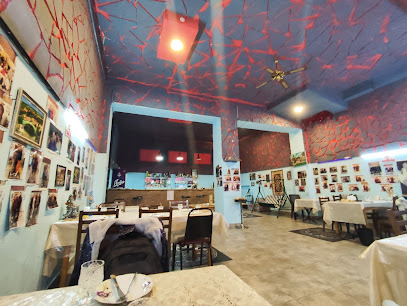
OtsY • ოცი
0.2 km
Experience the best of Georgian cuisine at OtsY in Tbilisi – where tradition meets innovation in every dish.
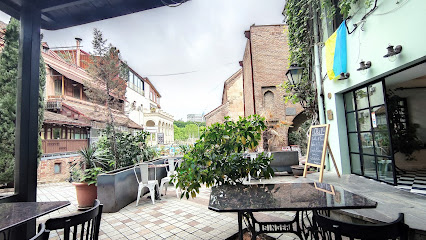
Vinotel
0.2 km
Experience authentic Georgian hospitality at Vinotel – your gateway to exploring Tbilisi's rich culture and exquisite culinary delights.

Blue Fox Restaurant and Bar Tbilisi
0.2 km
Savor authentic Georgian flavors at Blue Fox Restaurant and Bar in Tbilisi's historic Dzveli Tbilisi district.
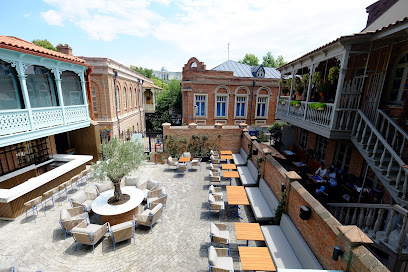
Restaurant Pasanauri On Baratashvili Str
0.3 km
Experience authentic Georgian cuisine at Restaurant Pasanauri in Tbilisi – where tradition meets taste in every dish.
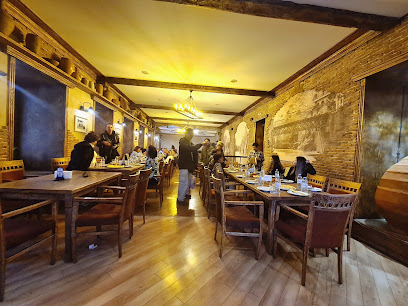
Restaurant Culture
0.3 km
Savor the flavors of Georgia at Restaurant Culture in Old Tbilisi – an authentic dining experience steeped in tradition.

Nikolozi
0.4 km
Experience authentic Georgian cuisine at Nikolozi in Old Tbilisi - where tradition meets taste in every delightful bite.
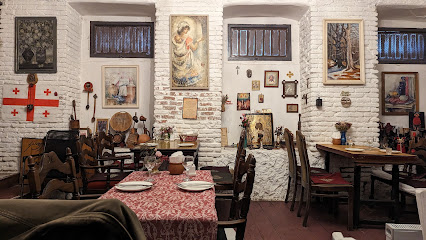
ode ოდე
0.4 km
Discover authentic Georgian cuisine at Café Ode in Old Tbilisi – where tradition meets modernity in every delicious bite.
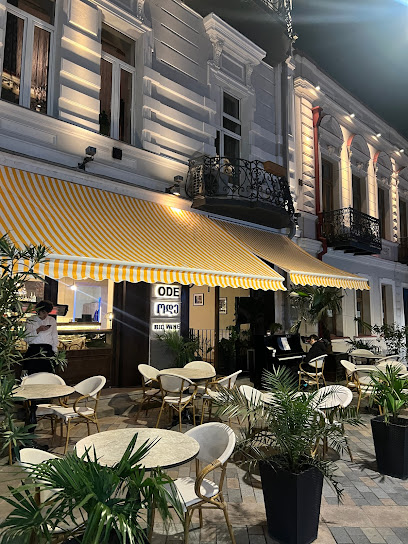
BalconY no7
0.5 km
Experience authentic Georgian cuisine at BalconY no7 in Old Tbilisi—where tradition meets taste in a charming setting.
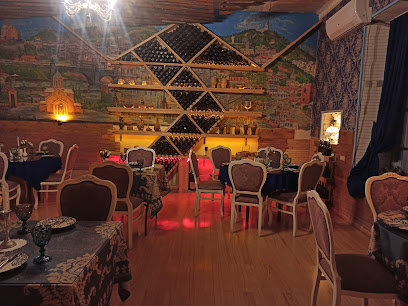
Baoma
0.5 km
Experience authentic Georgian cuisine at Baoma, nestled in the charming streets of Old Tbilisi—where tradition meets flavor.
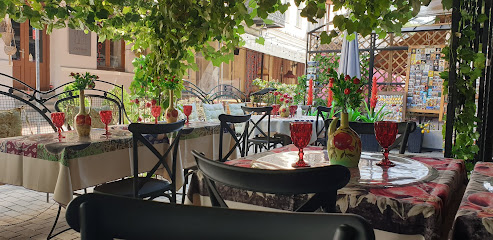
Tbilisi
0.5 km
Explore Tbilisi's rich culinary heritage with its fusion of traditional Georgian dishes and modern gastronomy set against a backdrop of stunning architecture.
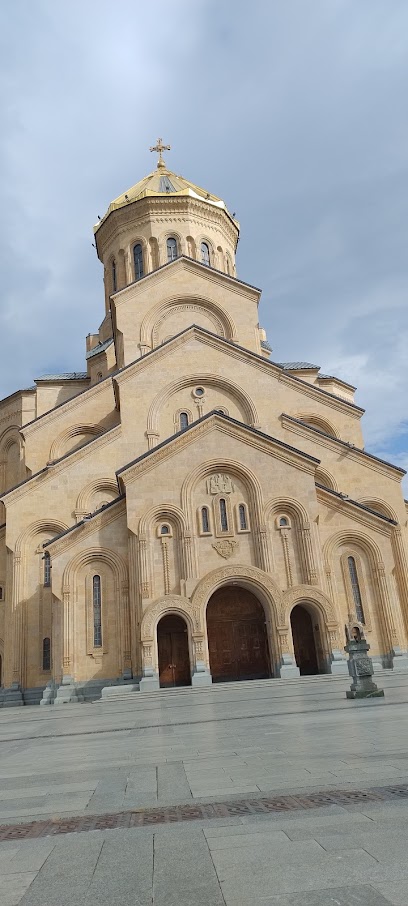
Sominee Restaurant
0.6 km
Discover authentic Georgian flavors at Sominee Restaurant - where tradition meets modern dining in Tbilisi's charming Dzveli district.
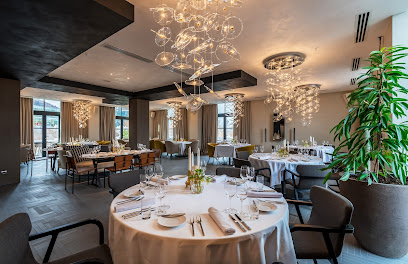
Cafe Daphna
0.6 km
Experience authentic Georgian cuisine at Café Daphna in Tbilisi – where tradition meets modern charm amidst vibrant local culture.

NamiVels - ნამი ველს
0.6 km
Discover NamiVels in Tbilisi for an authentic Georgian dining experience with exquisite flavors and exceptional wines.
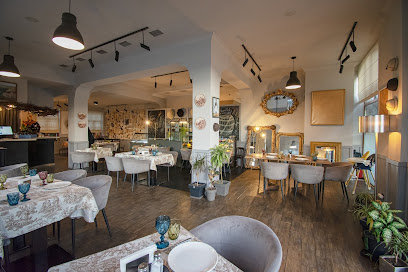
Restaurant Archive
0.6 km
Experience authentic Georgian cuisine at Restaurant Archive in Tbilisi's historic Dzveli district—where tradition meets flavor.
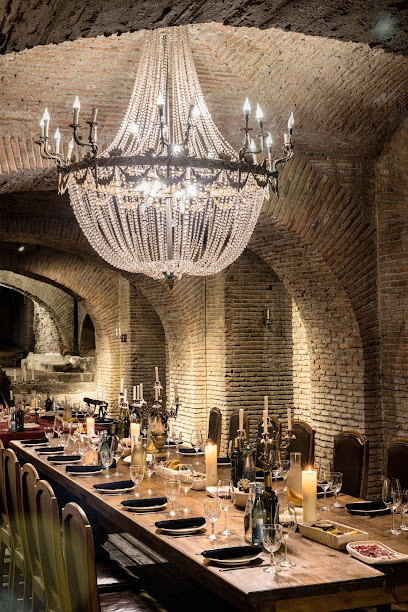
Markets, malls and hidden boutiques
Tsangala's Wine Shop & Bar
0.2 km
Discover the heart of Georgia's wine culture at Tsangala's Wine Shop & Bar, where tradition meets a modern tasting experience in the vibrant Old Tbilisi.
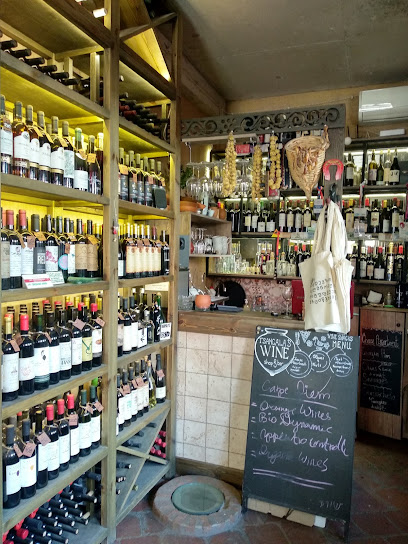
Babale
0.4 km
Explore Babale in Old Tbilisi: A Unique Souvenir Store Offering Handcrafted Treasures and Local Art.
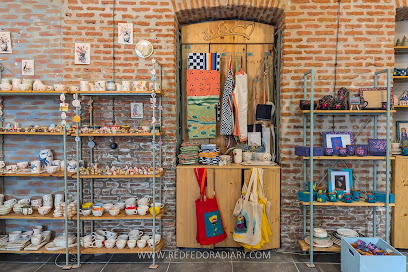
8/10 Shop
0.5 km
Explore the heart of Tbilisi at 8/10 Shop, your destination for authentic Georgian gifts and souvenirs, blending tradition with contemporary artistry.
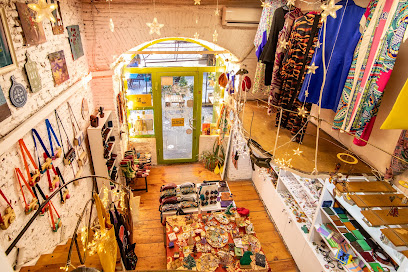
Khurjini
0.5 km
Explore the essence of Georgia at Khurjini, Tbilisi's beloved natural goods store, where local flavors and artisanal crafts await.
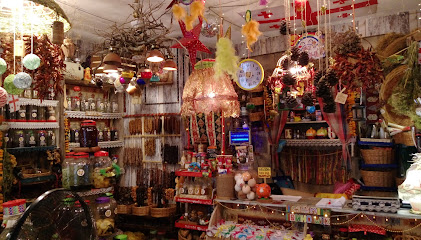
Underground Shop N23
0.6 km
Explore the enchanting Underground Shop N23 in Tbilisi for unique Georgian gifts and souvenirs that embody the spirit of the region.

Dry Bridge Market
0.6 km
Discover the Rich Culture and Unique Treasures of Tbilisi at the Iconic Dry Bridge Market - A Must-Visit Flea Market Experience.
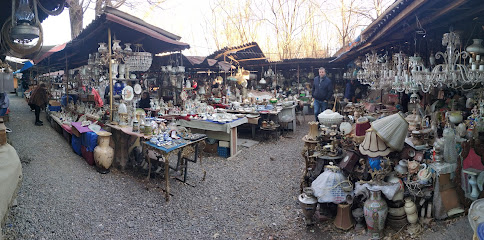
Phokany
0.7 km
Explore Phokany in Old Tbilisi for exquisite jewelry, showcasing Georgian craftsmanship and artistry in every piece.
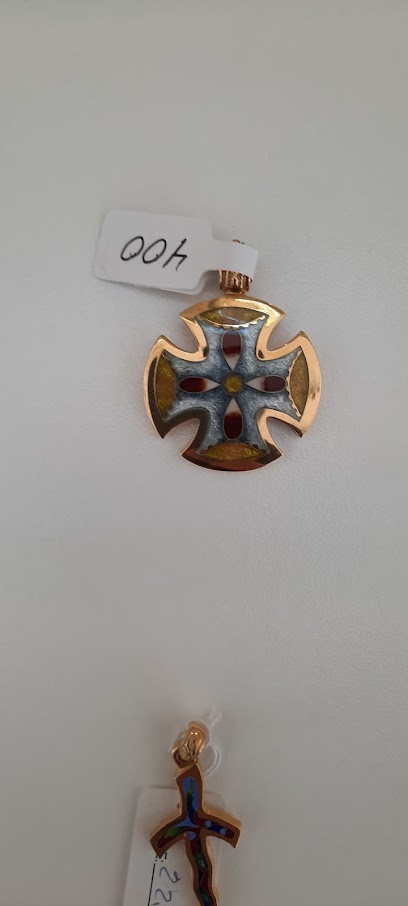
Alavi - Georgian Gift Shop & Restaurant
0.7 km
Experience the best of Georgian cuisine and craftsmanship at Alavi, a unique gift shop and restaurant in Tbilisi's historic heart.
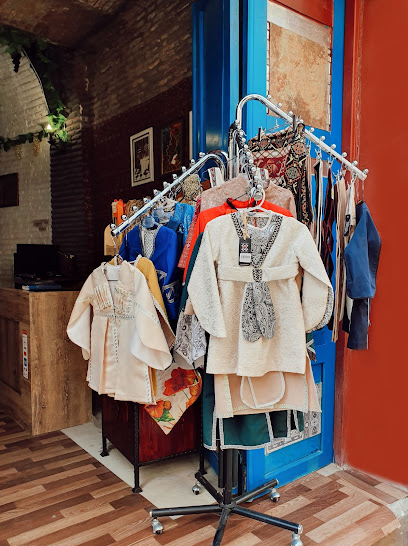
Galleria Tbilisi
0.7 km
Explore the vibrant Galleria Tbilisi, a shopping haven filled with local charm, international brands, and delightful dining options in Georgia's capital.
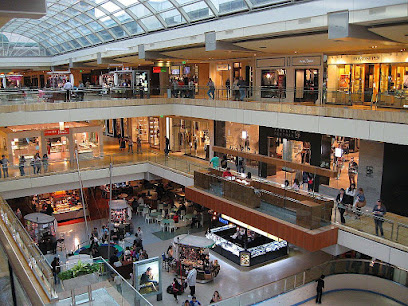
Avtandil
0.7 km
Explore Avtandil, Tbilisi's premier vintage clothing store, offering a unique blend of timeless fashion and local craftsmanship in the heart of the city.
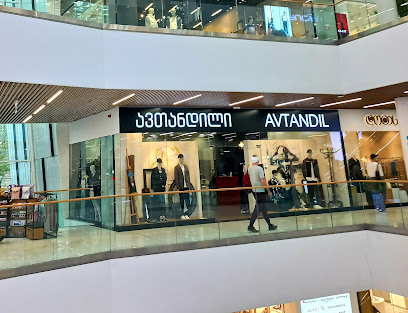
ODella
0.8 km
Explore ODella in Galleria Tbilisi for unique Georgian gifts, handmade crafts, and local delicacies that capture the essence of your travels.

THE VINTAGE kimono shop (@kimono_tbilisi)
0.8 km
Discover the charm of vintage fashion at The Vintage Kimono Shop in Tbilisi, where traditional Japanese style meets contemporary elegance.
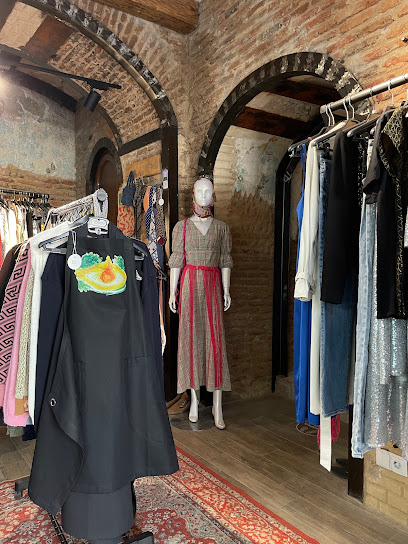
vintage shop shantay
0.8 km
Explore Tbilisi's Vintage Shop Shantay for unique clothing treasures and an authentic shopping experience in the heart of Old Tbilisi.
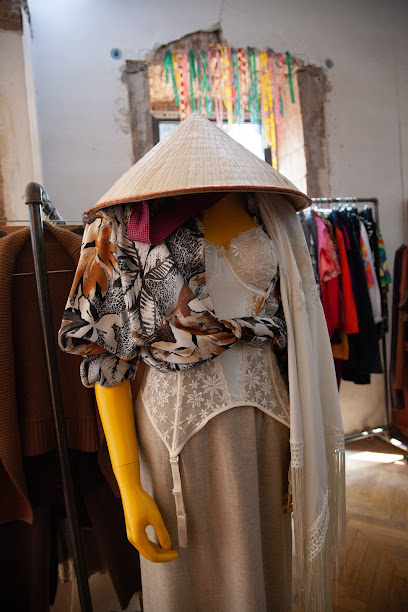
Meidan Bazar
0.8 km
Explore Meidan Bazar in Tbilisi - a vibrant market filled with local crafts, delicious Georgian cuisine, and rich cultural experiences awaiting every visitor.
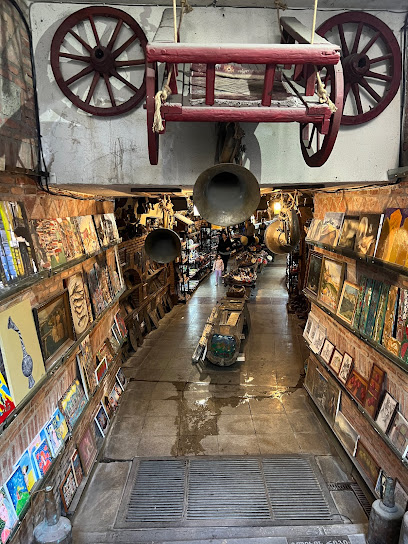
TbiliSee Hotel
0.8 km
Discover comfort and culture at TbiliSee Hotel, your perfect base for exploring Tbilisi's historic charm and vibrant lifestyle.

Essential bars & hidden hideouts
Flags Wine Bar
0.2 km
Discover the enchanting Flags Wine Bar in Tbilisi, where exquisite wines and a cozy atmosphere await every traveler.
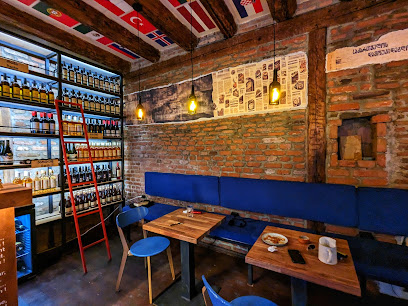
Sports Bar
0.4 km
Experience the thrill of sports at this vibrant bar in Old Tbilisi, offering delicious cuisine, live music, and a lively atmosphere.
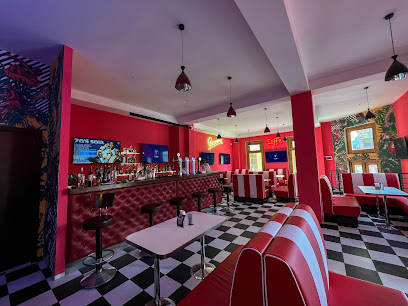
MUSE
0.4 km
Discover Tbilisi's nightlife at MUSE, a lively bar offering exquisite drinks and stunning city views in the heart of Old Tbilisi.
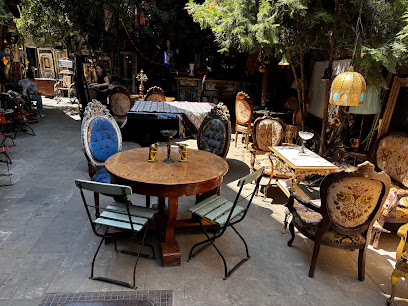
Anima Bar
0.4 km
Experience the vibrant ambiance and delicious Georgian cuisine at Anima Bar, a must-visit pub in Tbilisi's historic district.
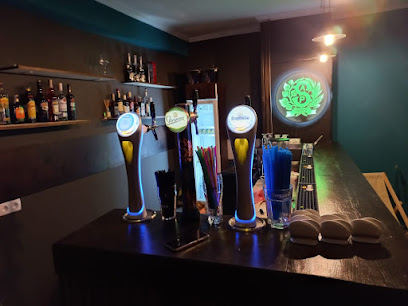
Sakhelosno BAR
0.5 km
Experience the vibrant nightlife at Sakhelosno BAR in Tbilisi, where fun, affordable drinks, and dancing await you!
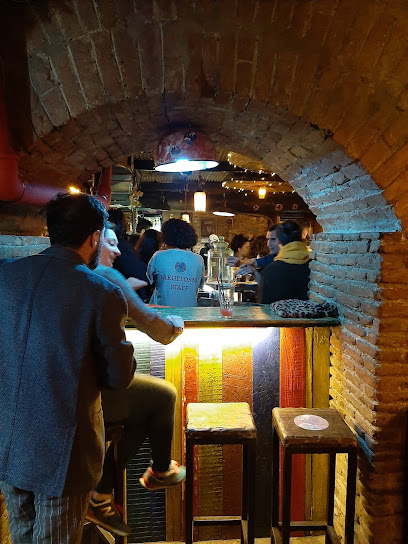
Kviti (Wine Bar&Shop)
0.5 km
Discover the essence of Georgian wine culture at Kviti, a delightful wine bar in Tbilisi's historic Dzveli Tbilisi district.

Warszawa
0.5 km
Experience the lively nightlife of Tbilisi at Warszawa, a vibrant bar perfect for socializing and enjoying local drinks in a unique atmosphere.
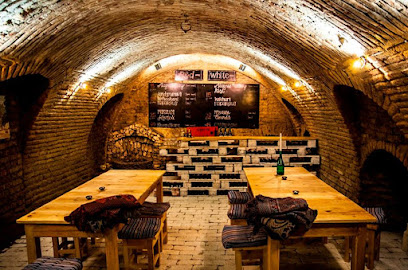
Kala
0.5 km
Experience the rich flavors of Georgia at Café Kala, a cozy restaurant in Old Tbilisi offering a delightful mix of local and international cuisine.
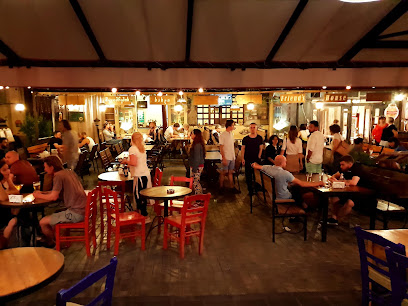
Stelzenhaus
0.5 km
Discover the best of Georgian and international cuisine at Stelzenhaus, a vibrant restaurant in the heart of Old Tbilisi.
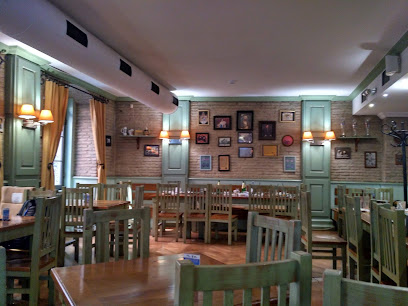
Barbar'a Bar
0.6 km
Discover Barbar'a Bar in Old Tbilisi, where exquisite cocktails meet a vibrant atmosphere and delectable Georgian cuisine.
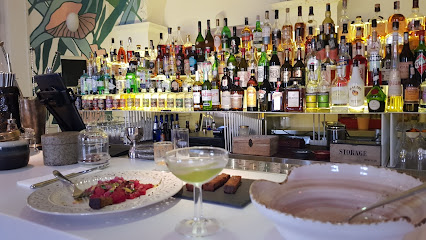
Quincy Bar
0.6 km
Experience the vibrant nightlife of Tbilisi at Quincy Bar, where innovative cocktails and stunning riverside views create unforgettable moments.
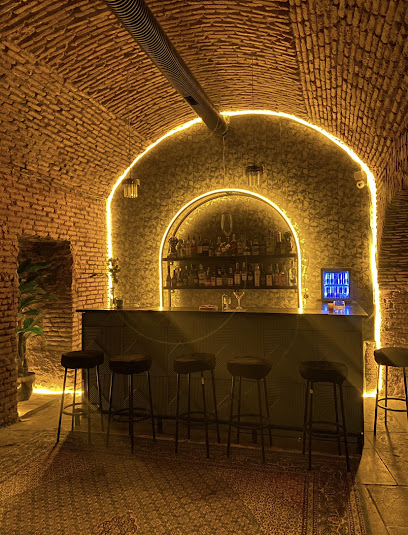
Mosmieri Wine and Tapas
0.7 km
Discover the authentic flavors of Georgia at Mosmieri Wine and Tapas, where exquisite wines meet delightful tapas in Old Tbilisi.
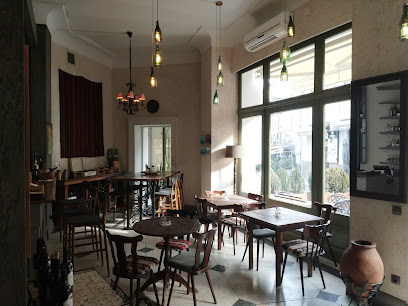
Unholy Bar
0.7 km
Experience the vibrant nightlife and welcoming atmosphere at Unholy Bar, Tbilisi's premier gay bar in the heart of Old Tbilisi.
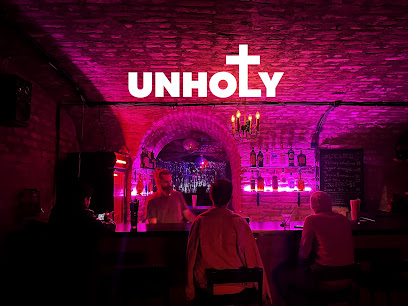
The Gin Corner
0.7 km
Discover The Gin Corner, Tbilisi's premier cocktail bar, offering unique gin selections and an inviting atmosphere perfect for relaxation.

El Centro
0.7 km
Experience the vibrant nightlife at El Centro, Tbilisi's premier cocktail bar, where unique drinks and a stylish atmosphere await.
